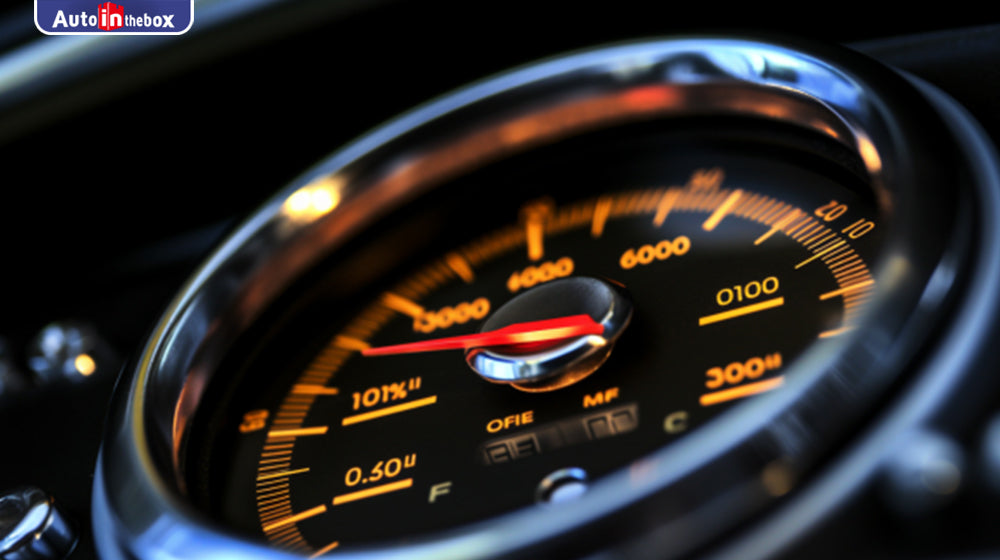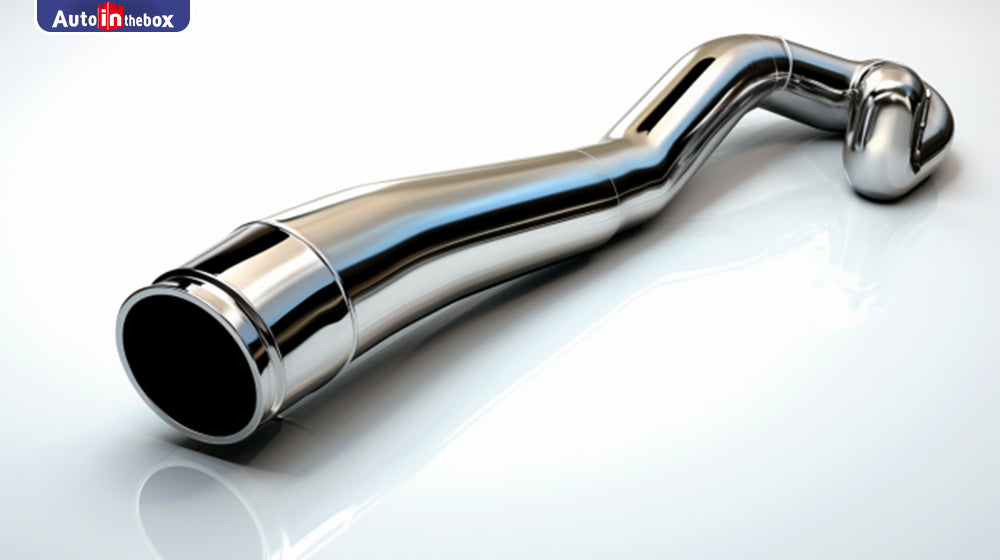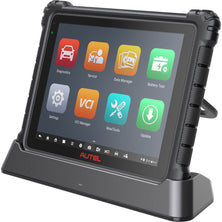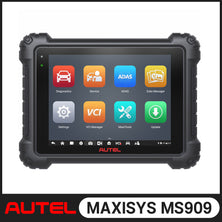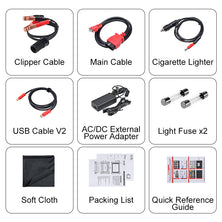
What happens when a NOx sensor shows deviations or errors?
NOx sensors, or nitrogen oxide sensors, are devices used in automotive exhaust systems to measure and monitor the concentration of nitrogen oxides (NOx) in the vehicle's emissions. They play a crucial role in emission control systems by providing real-time feedback on NOx levels, allowing the vehicle's engine management system to make adjustments for optimal performance and compliance with emission regulations.
Recommended 2023 top car diagnostic tool:Autel IM608II,Launch pro5,Launch IMMO elite,Launch PADVII
These sensors work based on various principles such as electrochemical, optical, or semiconductor technologies. They detect the presence of NOx gases in the exhaust stream and convert it into an electrical signal, which is then interpreted by the vehicle's engine control unit (ECU). The ECU uses this information to adjust fuel injection, air-to-fuel ratio, and other parameters to minimize NOx emissions.
The importance of NOx sensors lies in their ability to help vehicles meet stringent emission standards and reduce the environmental impact of combustion engines. Nitrogen oxides contribute to air pollution and are associated with the formation of smog, acid rain, and adverse health effects. By accurately monitoring NOx levels, these sensors enable the implementation of emission control strategies, such as selective catalytic reduction (SCR), to effectively reduce NOx emissions.
NOx sensors also play a crucial role in the performance and durability of emission control systems. They help ensure the optimal functioning of catalytic converters and other components by providing feedback on the efficiency of NOx reduction processes. Timely detection of deviations or errors in NOx sensor readings allows for prompt maintenance or replacement, ensuring the system's effectiveness in reducing emissions and preventing damage to other components.
Overall, NOx sensors are vital for achieving cleaner air and environmental sustainability in the automotive industry. Their accurate measurement and monitoring of NOx emissions help improve air quality, comply with emission regulations, and promote the development of more efficient and eco-friendly combustion technologies.
Common causes of NOx sensor failures can include:
- Contamination: NOx sensors can be affected by contaminants present in the exhaust gases, such as sulfur compounds, oil residues, and particulate matter. The accumulation of these substances on the sensor's surface can hinder its ability to detect and measure NOx accurately.
- Aging and Degradation: Over time, NOx sensors can experience wear and tear, leading to a decrease in their performance. Exposure to high temperatures, thermal cycling, and chemical reactions can contribute to sensor aging and degradation, affecting its sensitivity and response time.
- Physical Damage: The NOx sensor can be susceptible to physical damage from impacts, vibrations, or improper handling during maintenance or repairs. Cracks or fractures in the sensor's housing or sensing elements can impair its functionality and result in erroneous readings.
- Wiring or Connector Issues: Faulty wiring connections or damaged connectors can disrupt the communication between the NOx sensor and the vehicle's engine control unit (ECU). This can lead to intermittent or complete loss of signal, causing the sensor to provide inaccurate readings or trigger a fault code.
- Exhaust Gas System Malfunction: Issues with other components in the vehicle's exhaust system, such as faulty catalytic converters, leaking exhaust pipes, or malfunctioning exhaust gas recirculation (EGR) systems, can impact the operation of the NOx sensor. These problems can introduce abnormal gas flow, excessive backpressure, or altered gas compositions, leading to inaccurate readings or sensor damage.
- Environmental Factors: Harsh environmental conditions, such as extreme temperatures, high humidity, or exposure to corrosive substances, can contribute to NOx sensor failures. These factors can accelerate sensor deterioration, increase electrical resistance, or induce chemical reactions that impair the sensor's performance.
It's important to note that these are general causes of NOx sensor failures, and specific vehicle models or sensor types may have additional factors that can contribute to malfunction. When diagnosing a NOx sensor issue, it's recommended to follow the manufacturer's guidelines and consult professional technicians for accurate troubleshooting and repair.
The failure of a NOx sensor can have significant impacts on vehicle performance and emission control. Here are some effects of NOx sensor failures:
- Impaired Engine Performance: A malfunctioning NOx sensor may provide incorrect readings or no readings at all to the engine control unit (ECU). This can lead to improper adjustments in the fuel-air mixture, ignition timing, and other engine parameters. As a result, the engine may experience reduced power, rough idling, hesitation, or decreased fuel efficiency.
- Increased Emissions: NOx sensors play a crucial role in controlling and reducing nitrogen oxide emissions. When a NOx sensor fails, the ECU loses accurate feedback on NOx levels in the exhaust gases. This can prevent the implementation of appropriate emission control strategies, leading to increased NOx emissions beyond regulatory limits. Consequently, the vehicle may fail emissions tests and contribute to environmental pollution.
- Inaccurate Diagnostic System: Modern vehicles have onboard diagnostic systems that rely on data from various sensors, including NOx sensors, to detect and diagnose engine and emission-related issues. A faulty NOx sensor can generate false readings or trigger erroneous diagnostic trouble codes (DTCs). This can confuse technicians during troubleshooting, potentially resulting in unnecessary repairs or overlooking other underlying problems.
- Adverse Effects on Other Emission Control Components: NOx sensors are integral to the proper functioning of emission control systems, such as selective catalytic reduction (SCR). A failed NOx sensor may prevent optimal operation of these systems, compromising the efficiency of downstream components like catalytic converters and diesel particulate filters. This can lead to increased emissions of pollutants like carbon monoxide (CO), hydrocarbons (HC), and particulate matter (PM).
- Malfunction Indicator Lamp (MIL) Activation: When a NOx sensor fails or provides abnormal readings, it often triggers the activation of the Malfunction Indicator Lamp (MIL) or Check Engine Light. This serves as a warning to the driver that a fault has been detected in the emission control system. Continued driving with a lit MIL due to a faulty NOx sensor may also result in reduced engine performance or vehicle operation limitations imposed by the vehicle's computer system.
It is essential to address NOx sensor failures promptly to ensure proper engine performance, compliance with emission regulations, and the longevity of emission control components. Consultation with qualified technicians and adherence to manufacturer-recommended maintenance practices can help diagnose and resolve NOx sensor issues effectively.
Diagnosing and repairing NOx sensor failures typically involves the following steps:
- Scan for Diagnostic Trouble Codes (DTCs): Use a diagnostic scan tool to retrieve DTCs stored in the vehicle's onboard computer system. Specific DTCs related to the NOx sensor can provide valuable information about the nature of the failure or deviation.
- Visual Inspection: Conduct a visual inspection of the NOx sensor and its wiring harness. Look for signs of physical damage, loose connections, or corrosion. Ensure that the sensor is properly mounted and securely fastened.
- Functional Testing: Perform functional tests on the NOx sensor using specialized diagnostic equipment. This may involve applying voltage or simulating exhaust gas conditions to observe the sensor's response. Compare the sensor's readings to the manufacturer's specifications to determine if it is functioning correctly.
- Check Wiring and Connectors: Inspect the wiring and connectors associated with the NOx sensor. Look for damaged wires, loose connections, or signs of wear. Repair or replace any faulty wiring or connectors found during the inspection.
- Cleaning and Calibration: If the NOx sensor is contaminated with deposits or substances that can affect its performance, consider cleaning it using manufacturer-approved cleaning agents or methods. Follow proper procedures to avoid damaging the sensor. Some sensors may require calibration after cleaning.
- Sensor Replacement: If the NOx sensor is determined to be faulty or cannot be repaired, replacement may be necessary. Select a compatible sensor according to the vehicle manufacturer's specifications. Install the new sensor following proper procedures, ensuring correct positioning and connection.
- Clear DTCs and Test: After repairing or replacing the NOx sensor, clear any stored DTCs using the diagnostic scan tool. Take the vehicle for a test drive to verify that the repair was successful and that the sensor is providing accurate readings.
It is essential to consult the vehicle's service manual or seek assistance from qualified technicians for specific diagnostic and repair procedures tailored to the vehicle make and model. Following proper diagnostic and repair practices helps ensure effective resolution of NOx sensor issues and proper functioning of the emission control system.
Vehicle manufacturers provide support and technical resources for NOx sensors through various channels. Here are some common ways vehicle manufacturers offer assistance:
- Service Manuals and Documentation: Vehicle manufacturers publish service manuals and documentation that provide detailed information about the vehicle's components, including NOx sensors. These resources contain diagnostic procedures, repair instructions, and specifications specific to each vehicle model, helping technicians troubleshoot and resolve NOx sensor issues accurately.
- Technical Hotlines and Support: Vehicle manufacturers often have dedicated technical hotlines or support teams that technicians and service professionals can contact for assistance. These teams consist of knowledgeable experts who can provide guidance, answer technical questions, and offer troubleshooting advice related to NOx sensors and other vehicle components.
- Online Resources and Technical Portals: Many vehicle manufacturers maintain online resources and technical portals accessible to authorized repair facilities and technicians. These platforms provide up-to-date information, repair bulletins, service campaigns, and frequently asked questions (FAQs) related to NOx sensors. These resources help technicians stay informed about common issues, recommended repair procedures, and any updates or recalls related to NOx sensor technology.
- Training Programs: Vehicle manufacturers often conduct training programs and workshops for technicians and service professionals. These programs focus on diagnosing, repairing, and maintaining various vehicle components, including NOx sensors. Training sessions cover topics such as sensor technology, diagnostic procedures, and proper repair techniques. These programs ensure that technicians are equipped with the necessary knowledge and skills to address NOx sensor issues effectively.
- Authorized Service Centers: Vehicle manufacturers have authorized service centers or dealerships that specialize in vehicle maintenance and repairs. These service centers have access to the latest technical information, genuine parts, and specialized diagnostic equipment. If a NOx sensor issue arises, owners can seek assistance from these authorized service centers, which are well-versed in the specific requirements and procedures outlined by the manufacturer.
It is advisable to consult the vehicle manufacturer's official resources, including service manuals and technical support channels, for accurate and up-to-date information on NOx sensors. Following manufacturer-recommended procedures and utilizing their technical support ensures that repairs are performed correctly and in accordance with the manufacturer's guidelines.
Prevention of NOx sensor failures involves several measures to maintain their optimal performance and prolong their lifespan. Here are some preventive steps:
- High-Quality Fuel: Use high-quality, low-sulfur fuel to minimize the risk of fuel contaminants that can lead to sensor contamination or damage. Poor-quality fuel may contain impurities that can negatively impact the sensor's performance.
- Regular Maintenance: Follow the recommended maintenance schedule provided by the vehicle manufacturer. Regular maintenance, including engine tune-ups and inspections, helps ensure the overall health of the vehicle's emission control system, including the NOx sensor.
- Avoid Extended Idling: Prolonged idling can lead to excessive heat buildup in the exhaust system, potentially affecting the NOx sensor's performance. Whenever possible, avoid extended idling periods and allow the vehicle's engine to operate at normal operating temperatures.
- Proper Driving Habits: Practice good driving habits, such as avoiding rapid acceleration or deceleration, which can place additional stress on the engine and exhaust system. Smooth and consistent driving reduces the strain on the NOx sensor and other components.
- Prevent Contamination: Take measures to prevent potential contamination of the NOx sensor. Avoid using additives or fuel treatments that are not recommended by the manufacturer, as they may contain substances that could harm the sensor. Additionally, avoid introducing foreign materials into the exhaust system during maintenance or repairs.
- Regular Inspection and Cleaning: Periodically inspect the NOx sensor for any signs of contamination or damage. Clean the sensor as recommended by the manufacturer, using approved cleaning agents and techniques. Regular cleaning helps maintain sensor accuracy and performance.
- Address Other Vehicle Issues Promptly: Promptly address any issues with the vehicle's exhaust system or related components, such as catalytic converters or EGR systems. Malfunctioning or failing components can impact the NOx sensor's performance and potentially lead to its failure.
By implementing these preventive measures, vehicle owners can minimize the risk of NOx sensor failures, ensuring accurate emission control and optimal vehicle performance. Following the manufacturer's guidelines and seeking professional assistance when needed is crucial for effective preventive maintenance.
